Recent Storm Damage Posts
Ice Dam Prevention and Remediation: Essential Tips
9/10/2023 (Permalink)
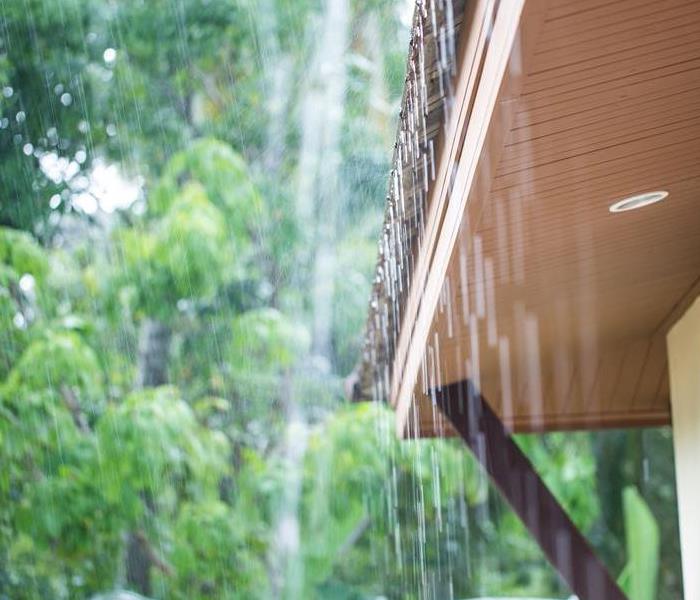 Proper remediation of water can help prevent damage to your home or business.
Proper remediation of water can help prevent damage to your home or business.
Ice dams are a common problem in Northeastern regions during the winter season. They occur when heat from the attic rises and melts snow on the roof, which then refreezes near the edge of the roof, causing a dam that blocks the flow of water. This can lead to water damage to the interior of the home and roof. In this blog post, we will explore essential tips for Northeast ice dam prevention and remediation.
Insulate and Ventilate the Attic
One of the most effective ways to prevent ice dams is to ensure proper insulation and ventilation in the attic. Insulation helps reduce heat transfer from the living space to the attic, while proper ventilation allows for the release of any heat and moisture that may build up in the attic. This balance can help maintain the temperature of the roof deck and reduce the risk of melting and refreezing of snow on the roof surface.
Seal Air Leaks
Air leaks between the attic and living space can allow warm air to enter the attic, leading to the formation of ice dams. Sealing these leaks can help reduce the transfer of heat to the attic and prevent ice dam formation. Common areas for air leaks include attic hatches, electrical outlets, and around pipes and ductwork. Sealing these areas with caulking or weatherstripping can help improve energy efficiency and prevent ice dams.
Remove Snow from the Roof
Removing snow from the roof can help prevent ice dams from forming. Using a roof rake or other tool to remove snow from the roof surface can reduce the risk of snow melting and refreezing near the edge of the roof. However, exercise caution when working on a roof surface and consider hiring a professional if you are not comfortable doing it yourself.
Use Heat Tape
Heat tape can be installed along the edge of the roof to melt snow and prevent the formation of ice dams. This can be especially useful in areas where ice dams are common, but it is important to use caution when installing heat tape and follow manufacturer guidelines to ensure proper installation and safety.
Address Ice Dam Remediation Quickly
If an ice dam has already formed, it is crucial to address it quickly to prevent further water damage to the interior of the home. Using a roof rake or other tool to remove snow and ice from the roof surface can help prevent further buildup, while using a safe ice-melting product can help break up the ice dam. Additionally, hiring a professional to address the ice dam and assess any damage to the roof or interior of the home may be necessary.
Ice dams can cause significant damage to Northeastern homes and require attention to prevent and remediate. Proper insulation and ventilation, sealing air leaks, removing snow from the roof surface, using heat tape, and addressing ice dam remediation quickly are all essential tips to prevent and mitigate the damage caused by ice dams. By taking proactive measures to prevent and address ice dams, Northeastern homeowners can protect their homes and ensure a safe and comfortable winter season.
6 Essential Tips for Maintaining Your Sump Pump and Preventing Water Damage
6/13/2023 (Permalink)
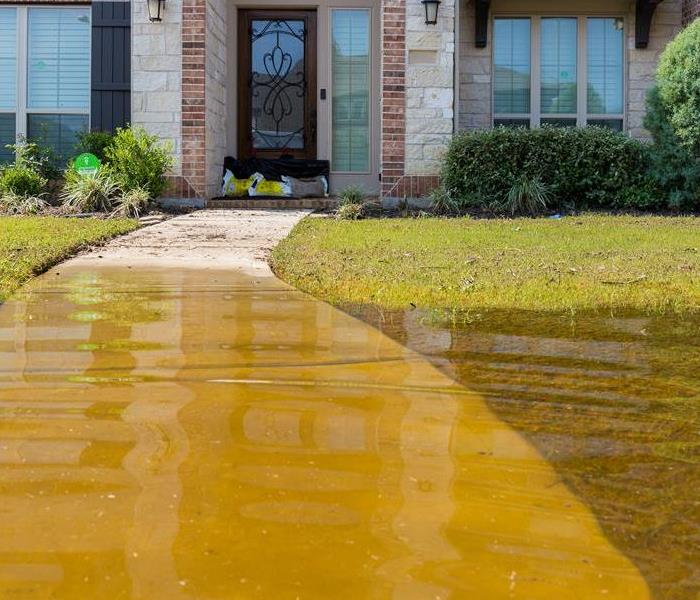 A Sump pump is crucial to have to help protect your building from water damage.
A Sump pump is crucial to have to help protect your building from water damage.
A sump pump is an essential piece of equipment for any building with a basement or crawl space. Its primary function is to prevent flooding and water damage by pumping excess water out of the area. However, like any piece of equipment, a sump pump requires regular maintenance to ensure that it continues to function properly. In this blog, we'll explore some tips on how to maintain a sump pump.
Check the Power Source
Before performing any maintenance on your sump pump, make sure it's disconnected from the power source. Unplug it or turn off the circuit breaker that controls the sump pump to prevent any accidents. It's also a good idea to test the outlet and ensure that it's functioning correctly.
Inspect the Sump Pump Basin
The sump pump basin is the area where the sump pump sits, and it's important to inspect it regularly to ensure that it's free of debris and functioning correctly. Remove any dirt, gravel, or debris from the basin and make sure the pump is sitting level. Check the float switch to ensure that it's moving freely and not stuck in the on or off position.
Check the Pump
The pump itself is the heart of the sump pump system, and it's essential to ensure that it's functioning correctly. Inspect the pump for any signs of damage or wear, such as rust or cracks. Check the impeller, which is the fan-like part of the pump that moves the water, for any debris that may be blocking it. Clean the impeller if necessary, and make sure it's moving freely.
Test the Pump
Testing your sump pump is an important part of maintenance. Pour a bucket of water into the sump pump basin to trigger the pump and make sure it's working correctly. Listen for any unusual noises or vibrations, and ensure that the pump is moving the water out of the basin and away from your building.
Check the Discharge Line
The discharge line is the pipe that carries water away from your building, and it's essential to ensure that it's free of obstructions and functioning correctly. Inspect the discharge line for any cracks, clogs, or damage, and clear any obstructions if necessary. Make sure the discharge line is securely attached to the pump and the discharge point.
Schedule Regular Maintenance
Finally, scheduling regular maintenance for your sump pump can help prevent problems and ensure that it continues to function correctly. Consider scheduling a professional inspection and maintenance service once a year to clean and inspect your sump pump thoroughly.
In conclusion, a sump pump is a crucial piece of equipment that requires regular maintenance to ensure that it continues to function correctly. By following the tips above, you can help prevent problems and keep your sump pump running smoothly. Remember to check the power source, inspect the sump pump basin, pump, and discharge line, test the pump, and schedule regular maintenance. With proper maintenance, your sump pump can help protect your building from water damage and flooding.
The Different Types of Floods
12/16/2022 (Permalink)
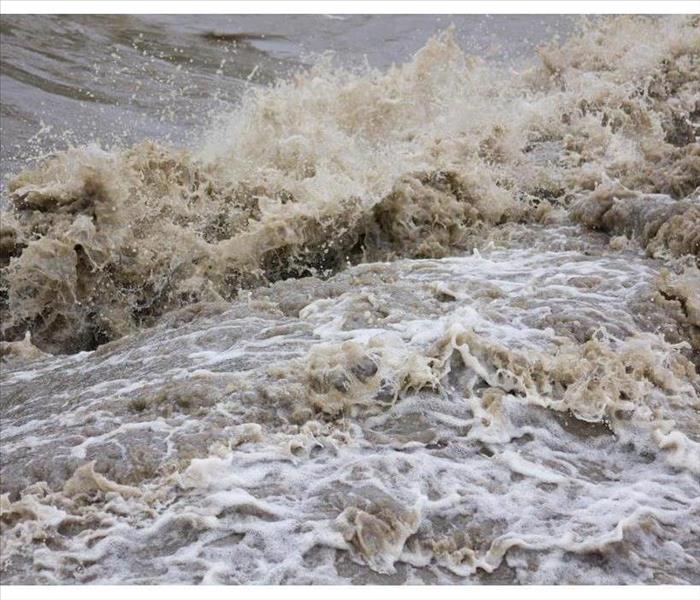 Flash floods may occur after a dam break or waterway failure.
Flash floods may occur after a dam break or waterway failure.
The 4 Different Types of Floods
Floods are one of the most devastating natural disasters in the world. Unfortunately, they can be hard to prevent. A flood is a natural disaster that occurs when an area is overwhelmed by water. It can be caused by any number of factors, including heavy rain, high tides, and extreme weather. Floods can cause damage to property and infrastructure. They can also cause ecological damage, such as soil erosion and pollution of water sources.
Flash Floods
Flash floods are common in arid and semi-arid regions, where heavy rainfall can quickly overwhelm the capacity of rivers to transport water away from their drainage basin. Flash floods may occur after a dam break or waterway failure. Flash flooding is also common during tropical cyclones when high winds move water downstream faster than expected and cause additional erosion, which further increases flow rates.
Urban Floods
Urban floods are caused by heavy rainfall, usually in a storm. The water flows down streets and through poor drainage systems, causing flooding in low-lying areas. Urban flooding can be the most destructive type of flood because of the amount of damage it causes.
River Floods
River floods are the most common type of flood in the US, making up approximately 40 percent of all flood events. They’re caused by rain, snowmelt and ice jams. In fact, river floods can be so severe that they aren’t even considered localized—they become regional or even national disasters.
River floods often occur along rivers with steep banks, which makes it easier for water to flow over its banks and into communities along its path. This is why many areas prone to river flooding are not usually considered high-risk areas for other types of flooding (such as coastal or urban flooding).
Coastal Floods
If you live on the coast, this is the flood you're most likely to experience. Coastal floods are caused by heavy rain or strong winds and can lead to serious damage if your home is built in a low-lying area. Coastal flooding happens when stormwater is unable to drain into the ocean or bay quickly enough because of high tides, strong winds, or storm surges. Storm surges are large waves created by tropical cyclones that can cause flooding even in areas far inland. Even if your home doesn't have any waterfront views, it's important to know about coastal flood risk so you can prepare for an emergency situation and know what steps to take if one occurs.
Floods are a very dangerous and costly natural disaster. They can cause damage to property, injury to people, and may require evacuation from your home. Floods can be devastating, not just for the people that are directly affected but also for the community and economy as a whole. It is important to know what type of flood you're dealing with so that you can have the best chance of staying safe or recovering from it quickly.
4 Things to Do if You Live in a Flood Zone
8/27/2022 (Permalink)
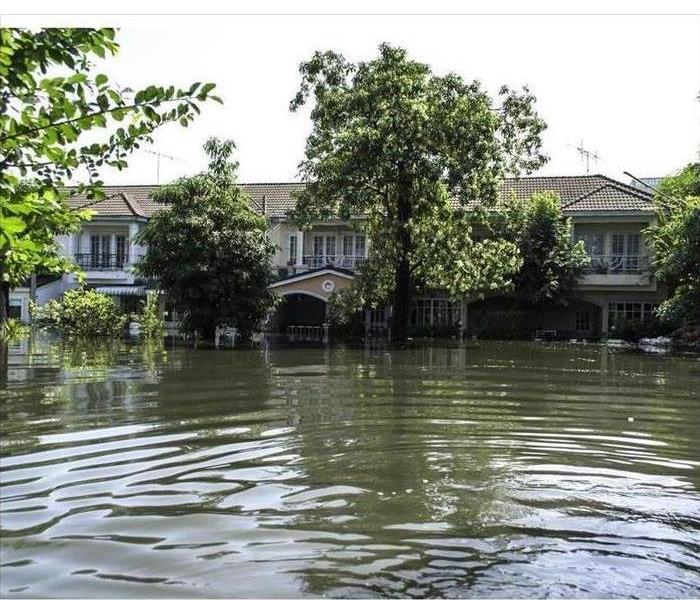 Flood damage in Black Lick, PA
Flood damage in Black Lick, PA
If You Live in a Flood Zone, Here Are 4 Things to Do
If you've ever seen the satellite images of Black Lick, PA, you may wonder why it is laid out that way. However, if you lay a flood zone map over it, you will quickly understand why it looks like that. People who live in high-risk areas need to know how to protect themselves so they don't end up paying the costs associated with hiring a remediation company.
1. Check the Flood Maps
FEMA offers an online tool so you can easily check to see what flood zone your home is in. Through the online portal, you can easily determine your home's risk. These maps are continually changing as different topographical features are altered. Regularly check these, so you are up-to-date on your home's risk.
2. Keep Track of Changes
New construction can easily change a flood zone's risk. Therefore, you need to keep track of nearby changes and note how they impact your property. This can ensure that you are properly prepared for a flood.
3. Buy Flood Insurance
If you are at risk, you need to have flood insurance. This is because flooding is not covered under your property insurance. Flood insurance is available through both private companies and a government-sponsored program. If you choose a private company, you will likely spend a few hundred dollars each year. However, it is worth it to protect you financially.
4. Use Flood Sensors
There are several ways you can protect your home from a flood. One of these is a flood sensor. These are installed throughout your home and let you know if your appliances leak, a pipe breaks, or outside water enters your basement. They can be worked into your home security system. This way, they can send you an alert if water enters your home.
These are just some of the measures you can take to protect your home. Learning more about living in an at-risk area can help you protect your home from storm and flood damage.
3 Ways To Flood Proof Your Home
7/27/2022 (Permalink)
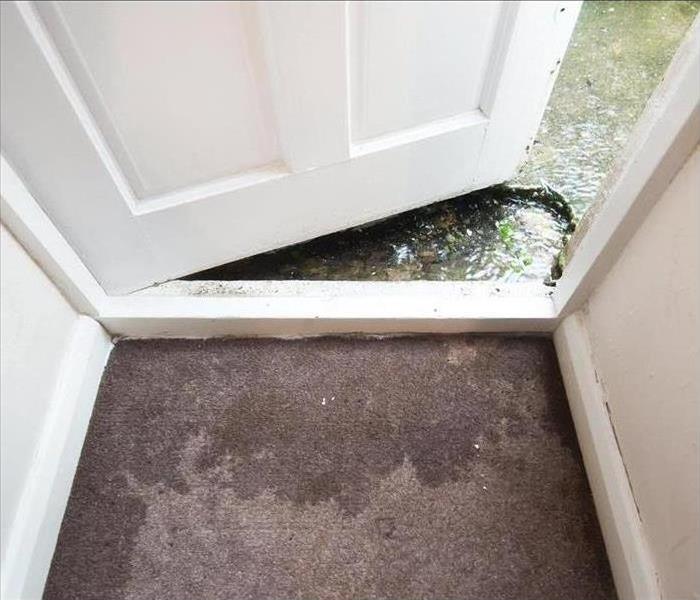 Flood damage in Homer City, PA.
Flood damage in Homer City, PA.
Protect Your House From Flood Damage
Floods are the most weather disaster in America. The heavy rains that accompany hurricanes and other major storms can cause lots of harm to your Homer City, PA, house. In fact, floods caused more than $260 billion in damage to American property between 1980 and 2013. Storms have only become more frequent and powerful since then, so many homeowners are interested in flood safety.
Luckily, there are some ways to flood proof your home. The below steps should help you protect your house from flood damage.
1. Alter Your Water Valves
During a flood, it is not just rainwater that enters your home. Your sewer system could back up, forcing contaminated sewage inside the property. To prevent this, install backflow valves on all of your pipes.
2. Protect Your Climate and Electrical Systems
Any anchored indoor equipment, including your water heater and furnace, should be placed above the expected flood level of your home. Your circuit breakers, switches, wiring and sockets must be elevated as well. For maximum flood safety, they should be at least a foot above the flood level.
3. Elevate Outdoor Equipment
Similarly, any air conditioners, generators or fuel tanks outside your home should be raised and anchored. This is particularly important for generators. After all, if your generator remains on the ground, it could get easily overcome by floodwater.
You should implement most of these measures well before the storm arrives. Yet there are safety tips you can use once the waters start to rise, as well. As the flooding begins, make sure to shut off the electricity in your home. You should also put your major appliances onto concrete blocks and move your belongings to the top floors of the home.
While the above flood safety strategies should reduce the flood damage to your home, the water may still cause extensive harm to your walls and floors. Emergency restoration specialists can repair your house and any items inside of it that are affected by the storm.
Preventing and Removing Ice Dams
5/16/2022 (Permalink)
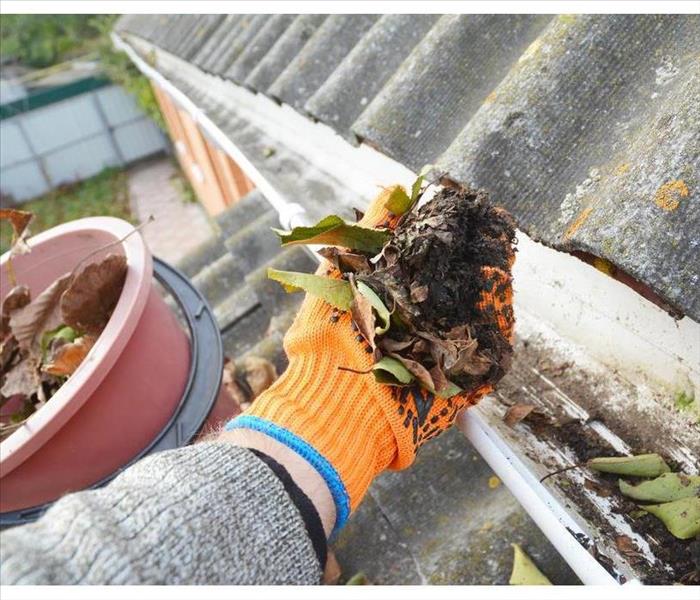 Keep your gutters and downspouts clean.
Keep your gutters and downspouts clean.
Ice Dam Prevention and Removal
The winter months can be incredibly challenging for homeowners. The winter brings new threats like snow, ice, and even the unique problem of a potential ice dam. Still, according to storm remediation services in Two Lick, PA, homeowners can do plenty of things to protect their roofs and properties from such issues.
1. Ensure Gutters and Downspouts Are Clean
Before winter storm season is even upon you, it is beneficial to clean out gutters and downspouts. Clogged drainage systems can prevent snow and ice from melting correctly. The gutters can flood and freeze, meaning melting snow will only back up and freeze under shingles, forming ice dams and potential leaks.
2. Use Roof Rakes
A roof rake is an effective way to remove excess snow from the roofline. The tool can resemble a long garden hoe or rake, and it is used to pull excess snow off the roof. Remember when using a roof rake that clearing the roof entirely of snow is unnecessary. You primarily want to eliminate snow from the first one or two feet above the gutter, providing plenty of room for it to melt.
3. Use Heat To Melt an Ice Dam
One tool often used for ice dam prevention is gutter wires or coils. Essentially, these tools are heating elements. They do not heat to dangerous temperatures, but you should still be careful whenever using heat against a wooden structure.
4. Use Ice Melt
You can also use ice melt to remove or prevent the development of ice dams. Many professionals recommend placing the ice melt in a nylon sock and setting it on top of a dam or in a gutter to prevent a dam. The goal is to create a channel through the ice to allow water to evacuate the roof.
An ice dam is a common problem in colder regions, but it is not an impossible one to resolve. Following the steps above should help you avoid any trouble with dams in the future.
3 Steps to Take in Case of a Flood on Your Commercial Property
4/22/2022 (Permalink)
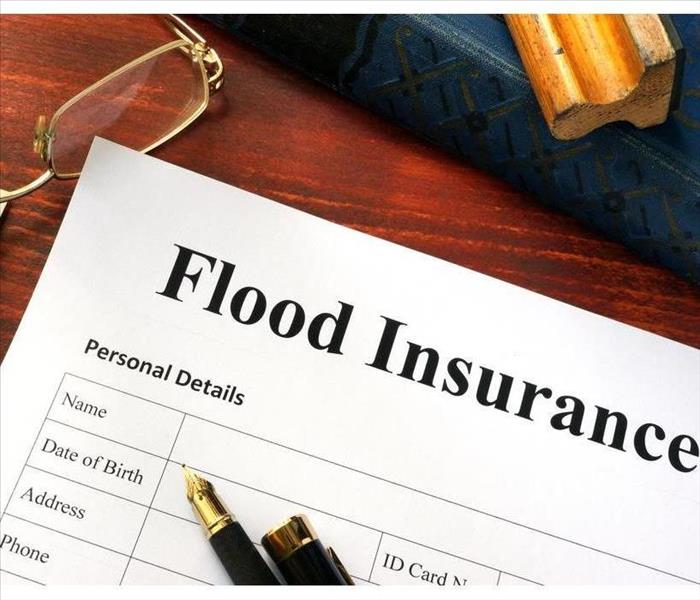 Contact your insurance.
Contact your insurance.
Three Steps To Take In Case Of a Flooding
Flood damage is a common and devastating experience for property owners in Black Lick, PA. If you have experienced a flood in your building, you can take action immediately to prevent damages from worsening with time. Some common reasons for flooding include:
- Burst pipes
- Heavy rainfall
- Sewage overflow
The type of flooding in your building will determine what action you should take for cleaning and reparation. Here are three steps to take in case of a flood.
1. Determine the Type of Water
There are three categories of water from flooding. They determine the risk of hazard for bacterial and viral illnesses from contact with the water. Category 1 is sanitary water which normally comes from water supply lines. This water is drinkable and safe to clean without protective gear. Category 2 water is somewhat dirty and includes water from showers or washing machines. Category 3 water, or black water, is highly unsanitary and should be handled with care. Flood water from storms falls into his category.
2. Clean As Much Water As You Can
Time is important when water enters your property. Water that is allowed to sit on your property can dampen natural construction materials and furniture, increasing the risk of irreparable flood damage. Clean the water with rags, towels, mops, and any other tool that can sop up the moisture. If you are handling black water, use protective gear. You may want to hire a storm damage restoration service to aid in the cleanup of Category 3 water and restoration of your property.
3. Contact Your Insurance
If you have flood insurance, they can provide you with a list of providers to aid in cleanup and repairs. They will often cover storm damage and sewer backup if it affects more than two acres of land. Contact your insurance company before hiring a contractor to help with restoring your property to prevent overspending.
Flood damage may not always be preventable but being prepared can make a great difference in costs and loss. Know what steps to take and lessen the damages made to your property by a flood.
3 Types of Mold Damage Your Home May Experience After a Flood
3/28/2022 (Permalink)
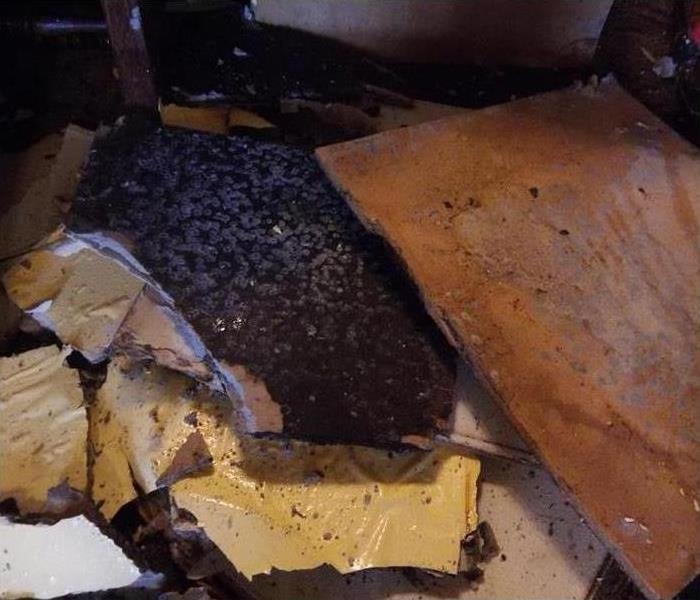 Mold can grow anywhere moisture is present.
Mold can grow anywhere moisture is present.
The Aftermath Of a Flood In Your Home
Whether the source was rising outdoor water levels or from a backed-up toilet, flooding can cause serious problems for your White, PA, home. One result of flooding may be spreading silently and causing considerable damage: mold growth. If you are working to recover from a flood, being able to spot the warning signs of fungi could help you prevent serious and costly problems later on.
1. Ceiling Stains
Mold often grows where you cannot see it, which means you may not be aware of its presence until it has already taken hold of your home. However, ceiling stains may indicate the presence of moisture and mold, as spores often attach where there are humid, moist conditions. If you notice these stains, you might want to have your ceiling opened and checked for mold as soon as possible.
2. Damaged Interior Walls
Drywall and other porous building materials tend to absorb standing water after a flood, making the interior walls a perfect environment for mold growth. Once fungi start to form, they can eat insulation and ruin any wiring that might be present behind the walls. Even if you experienced a minor flood in a room with drywall, you might want to ask for storm damage and flooding technicians to perform a flood cut, which opens a section of wall above the flood line and can alert you to the presence of any mold.
3. Stubborn Musty Smells
The formation of the black mold is often common after a flood, especially if the floodwaters were contaminated with sewer products and other bacteria. Because this type of fungi tends to grow quickly, it can create stubborn musty odors that may be difficult to eliminate. A flood mitigation and cleanup service will likely be able to give you a variety of options for odor removal.
The aftermath of a flood in your White, PA, home can be a considerable cause for worry. However, learning to spot possible signs of mold growth and the damage it may be causing could help you prevent future problems.
A Few Facts About Floodwater
1/12/2022 (Permalink)
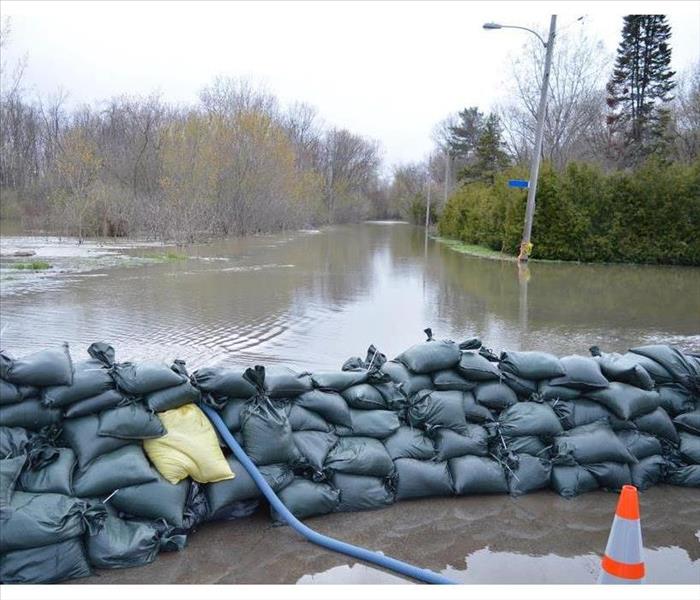 Water from a storm is considered Category 3 water.
Water from a storm is considered Category 3 water.
Things You Need To Know About Floodwater
Storm season in Black Lick, PA, can wreak havoc on your home. One of the most common problems that occur is water damage from floodwater. Homeowners often are tempted to clean up this type of mess themselves, but that is a mistake. Contact with the water should be avoided. To protect yourself and your family, there are some things you need to know about floodwater.
Contamination Category
Water from a storm is considered Category 3 water, which is highly contaminated. Removing it and repairing its damage requires professional help from water remediation specialists. Storm water can pick up contaminants from multiple sources:
- Backed up sewer system
- Agricultural or industrial runoff
- Toxic waste site overflow
- Oil or gasoline from driveways or streets
You never know where the water flooding your home has been. It's better to be on the safe side and avoid contact with it.
Contamination Levels
One of the first things that remediation experts are going to do when they come to your home is to determine the extent of the water damage. To do this, they discern the level of the Category 3 water. At Level 1, the water comes from an interior source. The amount of water is miniscule and hasn't soaked into anything yet. The damage caused at this level is relatively easy to fix. At Level 2, the water also comes from an interior overflow, but it affects a much larger area and may show signs of seeping into floors or walls. During a flood, however, the water comes from an outside source and causes quite a bit of damage. These factors make it Level 3 water. Not only must the water be removed, the area must also be disinfected before contractors can begin to make repairs.
Category 3 water damage necessitates drying, cleaning and repairing. If your home has been flooded by storm overflow, it is important to have the problem assessed and remedied by certified experts.





 24/7 Emergency Service
24/7 Emergency Service








